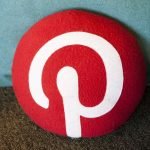Introduction.
Pinterest might not be the first platform that comes to mind when thinking about digital marketing, but it’s one of the most powerful tools for reaching engaged audiences, driving traffic, and building a brand.
Unlike other social media, Pinterest works more like a visual search engine, where users are looking for ideas, products, and solutions for everything from decorating their homes to planning meals.
And here’s the catch: 85% of Pinterest users say they go to the platform to start a new project, and around 90% of them use Pinterest to help make purchase decisions.
That makes Pinterest a unique space where people aren’t just scrolling mindlessly; they’re actively looking to take action.
If you’re looking to get serious about Pinterest for your business, creating a well-thought-out marketing plan is essential.
A strong Pinterest strategy can help you bring in more visitors to your website, boost your sales, and even grow your email list. But where do you start? And what should you focus on?
This guide breaks down everything you need to know about creating a Pinterest marketing plan that actually works.
I’ll walk you through setting goals, optimizing your account, crafting content, and measuring success, so you’ll be ready to make Pinterest a valuable part of your marketing toolkit.
Why Pinterest Marketing Matters
Pinterest is more than just a place for recipes and DIYs. With over 400 million active users every month, the platform has a huge audience that’s ready to find, save, and buy new things.
Here’s the kicker: about 70% of Pinterest users are women, and more than 50% of users make $50,000 or more a year. That’s a high-spending, actively-engaged crowd, which is exactly what many brands are looking for.
Plus, since Pinterest is more like a search engine than a social network, the content you post there has a longer lifespan compared to other platforms like Instagram or Twitter, where posts get buried quickly. On Pinterest, your pins can continue to drive traffic for months—or even years—after they’re posted.
How Do I Create a Pinterest Marketing Plan?
Step 1: Set Your Goals.
Every marketing plan needs clear goals. When it comes to Pinterest, think about what you want to achieve:
- Drive traffic to your website: Great for blogs, e-commerce sites, and content-driven businesses.
- Build brand awareness: Help people recognize and remember your brand.
- Increase sales: Create pins that directly lead to product pages or services.
Clear goals help guide your content and make it easier to measure results later on.
Step 2: Optimize Your Profile.
Your Pinterest profile is your first impression, so make it count. Start by making sure your business name is recognizable and includes keywords related to your niche. For example, if you run a bakery, including “bakery” in your username or bio can help Pinterest users find you more easily.
What to focus on:
- Profile Picture: Use a clear, professional photo or logo.
- Bio: Write a brief bio that explains what you offer. Include relevant keywords, as this can help your profile appear in search results.
- Website: Link your website and verify it with Pinterest to access analytics and more business tools.
Step 3: Create Boards and Organize Them.
Pinterest boards are like folders where you store different types of content. Think of them as categories or topics related to your business.
For example, if you’re a fitness brand, you might have boards like “Healthy Recipes,” “Workout Tips,” and “Fitness Gear.” This helps you organize your content in a way that makes sense to followers.
When creating boards:
- Choose Relevant Topics: Focus on what your target audience would want to see.
- Use Keywords: Include keywords in your board titles and descriptions to help them get discovered in Pinterest search.
- Organize Consistently: Keep similar topics together and try to maintain a consistent look and feel across your boards.
Step 4: Design Pins That Catch Attention
Visuals are everything on Pinterest. Users are drawn to high-quality, eye-catching images, so make sure your pins stand out. Here are a few tips for designing effective pins:
- Vertical Images: Use a 2:3 ratio (like 1000 x 1500 pixels) for best results.
- Use Text Overlays: Add brief text to explain what the pin is about; this can grab attention and add context.
- Consistent Branding: Use your brand colors, fonts, and logo in your pins to make them recognizable.
- High-Quality Images: Clear, bright images work best. Avoid low-quality or pixelated photos.
Step 5: Write SEO-Friendly Descriptions.
Pinterest’s search function is powered by keywords, so writing SEO-friendly descriptions is essential for getting your pins seen.
Use keywords related to your business or product, but keep it natural—avoid keyword stuffing. Think about what words someone would use to search for the type of content you’re sharing.
Step 6: Pin Consistently.
Consistency is key on Pinterest. Regular pinning helps keep your content visible and shows Pinterest that your account is active. Aim to pin at least once a day.
If this sounds overwhelming, you can use scheduling tools like Tailwind, which allows you to schedule pins in advance so you can keep a steady flow of content without having to log in every day.
Step 7: Use Pinterest Analytics to Track Your Success
Pinterest provides detailed analytics for business accounts, so make sure you’re paying attention to your numbers. Here’s what to look for:
- Impressions: How often your pins are seen.
- Engagement: How often people click, save, or interact with your pins.
- Traffic: How many visitors Pinterest drives to your website.
These metrics will help you understand what’s working and what isn’t so that you can refine your strategy over time.
FAQs
Q: Do I need a business account for Pinterest marketing?
Yes, a business account gives you access to analytics, ad options, and other tools that make Pinterest marketing more effective.
Q: How often should I pin?
A: Ideally, you should pin daily to maintain a consistent presence. Tools like Tailwind can help by allowing you to schedule pins in advance.
Q: Can I promote products directly on Pinterest?
Yes, Pinterest allows product links and shopping pins, making it easy for users to buy from your site directly.
Q: How long does it take to see results?
It varies, but since Pinterest content has a long lifespan, you may start to see steady traffic growth within a few weeks to a few months if you pin regularly and use good SEO practices.
Wrapping It Up
Pinterest is a unique platform that offers incredible potential for brands willing to invest a little time in creating eye-catching, valuable content. By setting clear goals, optimizing your profile, designing engaging pins, and tracking your analytics, you can create a Pinterest marketing plan that works for your business. As you get started, remember to stay consistent and patient—results on Pinterest can build slowly but pay off for the long term.
Have you tried Pinterest marketing yet? What goals would you want your Pinterest plan to achieve?





GIPHY App Key not set. Please check settings